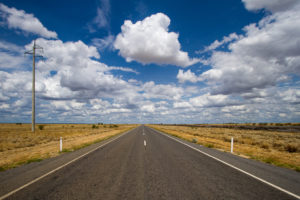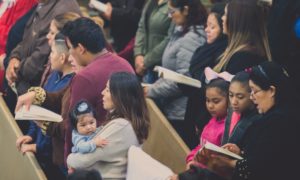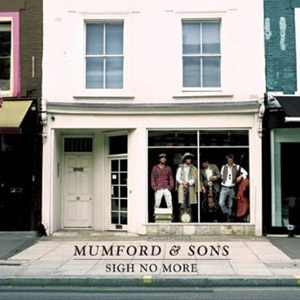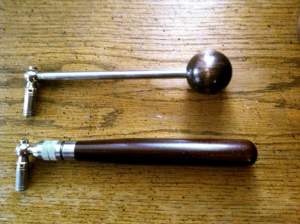Blogger Ginny Chilton Maxwell is Music Minister at Church of the Ascension in Norfolk, Virginia, where she serves as organist, choirmaster, and elementary music teacher.
Eastertide
Eastertide is the season where we get to hear a little each Sunday from the book of Acts, a record of the wild experiences of Jesus’s first disciples as they went into the world to tell the good news. In the Christian liturgical tradition, Lent is the season to reflect inwardly, but in Eastertide Jesus pushes us from the nest and we find ourselves, like those disciples, bumping our way through actual discipleship in the real world.
It’s exciting, especially at first, when the memory of the risen Lord is fresh in our minds. Think of the last time you had a personal revelation, or read a book you adored; you couldn’t wait to tell someone. But at some point the newness wanes and the vigor you felt at first is no longer enough to properly fuel your work in the world.
Christian Community
That is, I believe, where Christian community comes in. Guest blogger David Calvert made reference to community a few weeks ago when he wrote about the Common Hymnal project. In his blog, Calvert describes how, in the age of vinyl, people would anticipate a new album coming out and then gather together to listen to it. Before recording technology, too, someone who had a hunger for new songs would have to learn the song themselves in order to enjoy new music at home. Fast forward to 21st century, when we can download albums instantly and listen in our earbuds; this is not in itself bad, but something is lost when the only way we consume music is as background noise, by ourselves.
Making Time
The element of community is important to our experience of music, just as it is important to our experience of the risen Christ as we go day by day through the season of Easter. I have felt this recently, in situations where I made time to be in community, face to face, with other people. As a choir director, for instance, my choir and I feel refreshed in our knowledge of the risen Lord when we work intensely on an anthem and it comes together on a Sunday morning. We hit just the right chord and there is something sacred born that is more than the sum of the individual notes and voices. As a music teacher, I felt the Lord’s presence with my three- and four-year-olds when we were dancing with colorful scarves to Saint-Saëns’ “Aviary,” and suddenly a beautiful blue jay swooped by the window. Finally, the Lord graced me with his presence last week when I dragged myself to a Vacation Bible School meeting which I had been dreading, but which, by God’s grace, became a sacred space for us leaders to open our hearts about what we wanted for our church’s children. We came up with new, risky, yet exciting things we could try to make our hopes for our children a reality. In all of these examples, God made God’s self known to us in community, because we had all made the effort to show up, week after week. It was both because of and in spite of our efforts that we experienced these moments of awe and grace.
God’s Work
Much of God’s work is difficult and tedious and not every gathering of the faithful produces a golden moment we can treasure for weeks or years to come, but it is because we did not neglect to meet that we gathered what needed to do what Jesus sent us out to do. This Eastertide, as you flap your fledgling disciple wings, I hope you find people to flock with, people to make and listen to music with, and wonderful glimpses of the risen Christ to carry you all through the season.



 job that involves working at the school affiliated with my church. I have to say, I’d forgotten how much having children around makes each holiday feel so special. Children have an enthusiasm for celebrations and traditions that is infectious to the rest of us. Easter Sunday may not be a good time for the children’s choir to sing, but it’s perfectly appropriate to have them sing an Easter song on the Sunday(s) after Easter. Small children delight in having songs to sing that go with whatever season it is, so even if you’re working with children in a less formal setting than a choir, you can keep singing your resurrection songs all through the season. (Sidebar: I’ve found there aren’t enough Easter songs to satisfy the appetites of young children. Which Easter songs do your children love?) You might find that you have more opportunity to discuss the true meaning of Easter with the children once the Easter bunny has faded away, too.
job that involves working at the school affiliated with my church. I have to say, I’d forgotten how much having children around makes each holiday feel so special. Children have an enthusiasm for celebrations and traditions that is infectious to the rest of us. Easter Sunday may not be a good time for the children’s choir to sing, but it’s perfectly appropriate to have them sing an Easter song on the Sunday(s) after Easter. Small children delight in having songs to sing that go with whatever season it is, so even if you’re working with children in a less formal setting than a choir, you can keep singing your resurrection songs all through the season. (Sidebar: I’ve found there aren’t enough Easter songs to satisfy the appetites of young children. Which Easter songs do your children love?) You might find that you have more opportunity to discuss the true meaning of Easter with the children once the Easter bunny has faded away, too.



